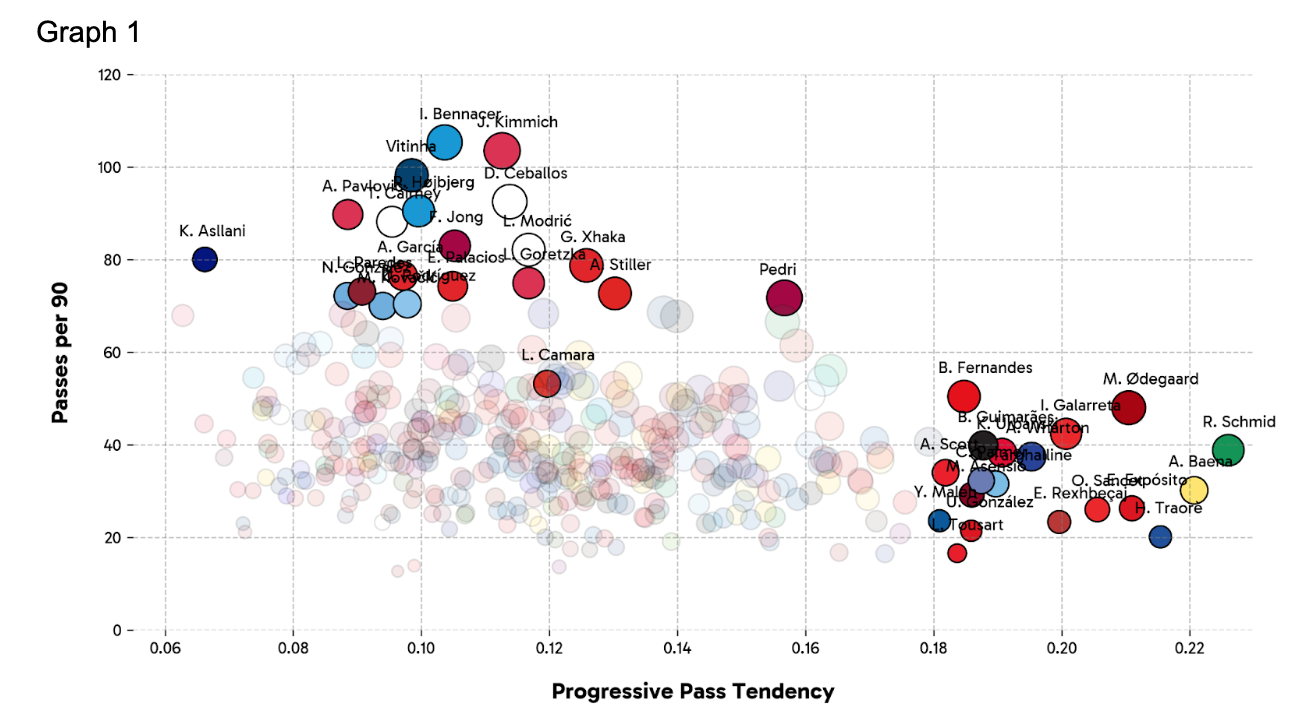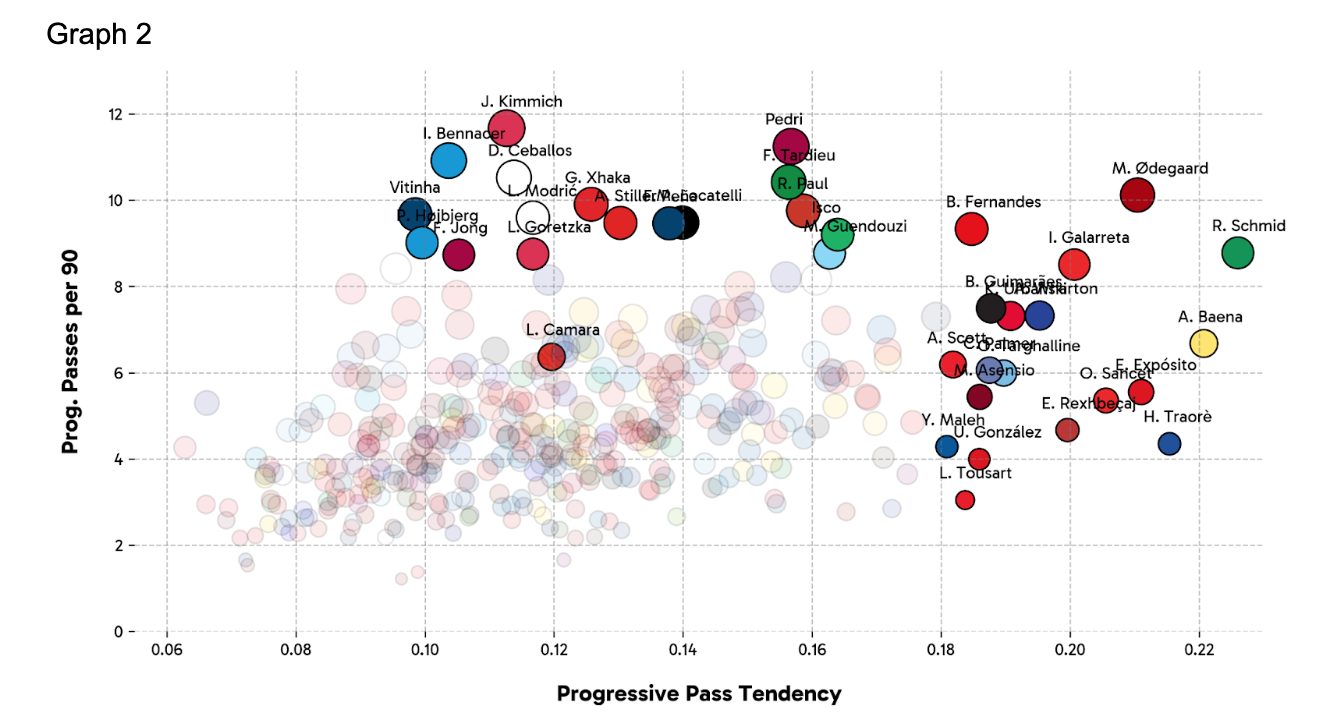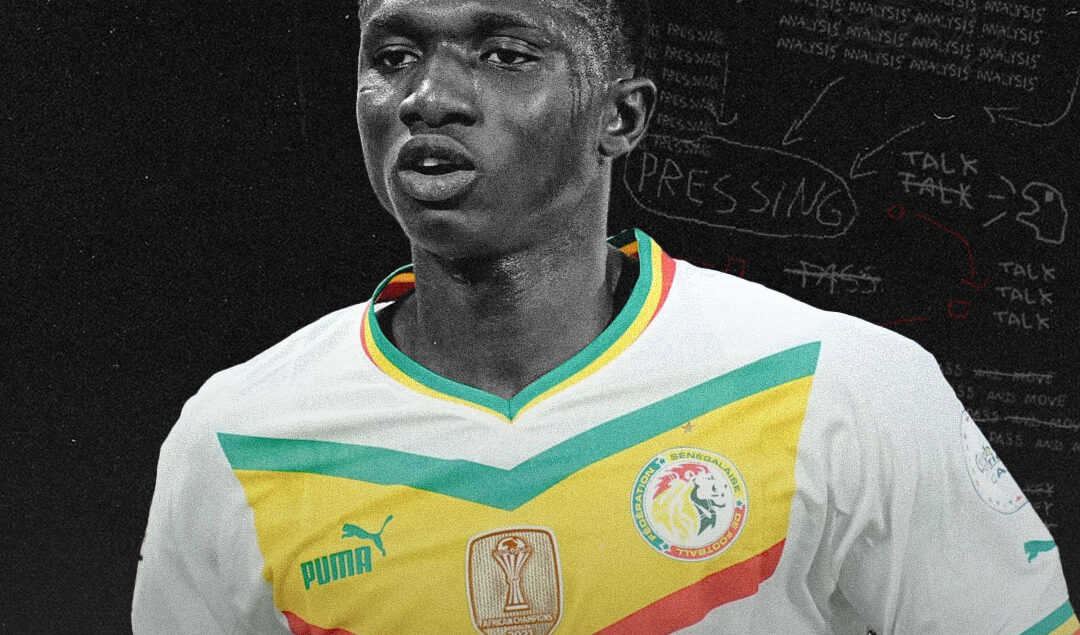Lamine Camara: Monaco’s Senegalese Midfield Maestro
Lamine Camara is a 21-year-old midfielder from Senegal, currently playing for AS Monaco. He started playing top-flight French football for Metz in 2023, playing just one season before moving to Monaco in 2024. He has made 23 appearances internationally, including 13 competitive appearances across the African Cup of Nations and African Nations Championship. During the 24/25 season, he has started 24 Ligue 1 games, as well as 9 Champions League games for Monaco. The club have secured Champions League qualification for the 25/26 season, currently sitting in third with one game left to play.
Managed by Adolf Hütter, Monaco tends to play with a 4-4-2 or 4-2-3-1 shape, where the central attacking midfielder plays high, sometimes joining the forward line. Camara plays in the midfield pair, primarily forming a double pivot with the experienced Denis Zakaria. Neither player commits religiously to a deeper or higher role; rather, the two share responsibilities and react to each other.
Zakaria tends to be a safer, more secure midfielder, while Camara is tasked with progressing the ball into the final third with more expansive passing. The young midfielder is a key creative asset for Hütter, contributing with 7 league assists this season as a set-piece taking midfielder – he is especially effective from corners.
Analysing Mika Biereth: The Next Striker off the Sturm Graz Conveyor Belt… and onto the Monaco One
Camara’s biggest strength when his team are on the ball is his passing. He frequently drops into the base of his Monaco’s attacking shape, between his own centre backs, where he can get on the ball to dictate play. When territory is more advanced, he is tasked to play one of two roles, depending on the moment. Sometimes, he stays as that central base, regulating play, trying to exploit wide space with long passes where possible.
At other times, he operates higher up, inside the right half-space channel, where he can penetrate the box with incisive and punchy passes, but also deliver crosses from deep positions. When the backline is a touch too high, Camara can exploit the space with an inswinging cross, not dissimilar to the balls Kevin De Bruyne and Trent Alexander-Arnold like to play in that position.
During build-up, Camara is the key progressor in central areas, taking the ball off his centre backs and connecting the defence to attack. Thilo Kehrer and Wilfried Singo are wonderful ball-playing centre backs, so Camara is not always the player passing the ball, but he is often the one receiving in pressure. When in deep positions, he is not a direct, through-the-lines progressor, he is more of a tempo controller, with a similar progressive passing tendency to players such as Joshua Kimmich, Granit Xhaka or Angelo Stiller.
When we bring in some data, one observation worth noting is that Camara doesn’t fall into either of the two tails of progressive passers. These areas on Graph 1, positioned towards the top left and bottom right, highlight the divergence of progression style seen amongst elite progressive midfielders. Progressive Pass Tendency is a relative measure of the progressive passing distance relative to total passing distance. Players with a high value play a lot of their passes forward.


The two groups we see can be characterised as:
- Tempo Dictating Playmakers (top left) – Ball-dominant, tempo-setting midfielders. They tend to have a lower progressive tendency because they are key to keeping the play moving, so they play shorter and sideways passes to facilitate possession.
- Direct Progression Catalysts (bottom right) – Progressive passers who see less of the ball, but are very quick to play forward. They play fewer passes, often as the secondary figure in possession, but have a very high progressive tendency, trying to get the ball forward as often as possible.
Camara is positioned towards the Tempo Dictating Playmakers group, which is where you want him to be. But the observation I wanted to highlight is that his progressive tendency aligns with the right sort of players, but his volume is a little lower. When you look at the second graph, you see how his progressive passes are below the group of top playmakers.
This isn’t so much a criticism, but a note that he is not quite used to being the possession-controlling playmaker of a team. Monaco hold a lot of possession, but the nature of their two-man midfield and the progressive defenders they use, means that Camara is not relied upon so much for progression.
Camara hits a lot of long passes and is generally very effective. Both his volume and success rate are strong, hitting across the ball with good technique, fading outward as they reach the target. He uses his long legs well here, stroking the ball with minimal backlift. He will frequently switch play either to an advanced fullback or a more progressive diagonal to a winger.
This is vital to his role as the tempo-setting and progressive midfielder, as he chooses when to keep the ball centrally, and when to exploit wide space quickly with a long pass. He has a clear preference to play these long balls towards his right winger. As a right footer who applies outward fade on the pass, this works perfectly, resulting in a pass that advances play yet fades into the winger’s path.
One issue with his long passing, however, is the speed at which they are played. The passes are often floated quite slowly, rather than being clipped more directly to the recipient. He can be slow to open up his body and play the pass – being able to receive and open the body with your first touch, then switch play with your second, is a huge asset. While this may seem like a small complaint, long passes from midfield into wide areas are aimed at exploiting space.
Whenever the central area gets congested, wide areas get vacated, and finding a winger with a direct pass can allow them to exploit space against an isolated fullback. A direct, long pass is perfect here as it finds the winger quickly, before the opponent can react. Floating a slow pass allows the opponent to react and adjust, greatly reducing the impact of the pass.
When he isn’t playing a long pass, Camara is pretty quick to move the ball. His volume of touches per pass is decent, and this really presents itself when in the final third. He is very comfortable using first-time passes or flicks around the corner. Around the box especially, he seems to know where his teammates, or the space, will be before he receives the pass. This allows him to kill defences with what appears to be a simple pass. While he sometimes does this in deeper build-up, his link play is most effective in the final third, moving the ball quickly and with quality.
What makes Camara unique within the field of ball-winning midfielders is his creativity. Having already mentioned his passing ability over range, or in-and-around the box, I must add that Camara is a real dead-ball specialist. He takes a lot of corners for Monaco as well as some free kicks, able to deliver both inswinging and outswinging crosses with great effect.
In the 24/25 Ligue 1 campaign alone, he has created 5 goals from dead-ball passes, averaging one in every four games. These numbers are great. There are very few defence-first midfielders who could hit 10 league assists with ease. In an advanced possession phase, he can occupy the right half space, playing penetrative passes into the box, but also delivering those in-swinging crosses when the time is right. Though it’s a nice problem to have, managers must work out how they can best utilise his deep controlling play, and his final third creativity.
Maghnes Akliouche: Monaco’s In-House Solution Paving his Way in Ligue 1
Whilst he has plenty of intriguing qualities, it must be said that Camara is not the most impressive ball carrier. Especially since joining Monaco, he has become much more of a passer than a dribbler. He is effective when travelling into contact, with his strong upper body and long legs allowing him to deal with confrontation.
Camara nevertheless is good at using his body, staying between the opponent and the ball, meaning he can duel effectively. He also has a good first touch and understanding of positioning, which, combined with the use of his body, allows him to receive or win the ball in tight areas without losing it. In addition to all of that, his burst of acceleration is really strong. This allows him to create separation from the opponent once he receives the ball.
It’s clear that Camara has plenty of room for improvement in terms of ball-carrying, especially when moving into the final third. When space is presented in front of him, he seems to lack confidence, and at times, he will slow down, not taking advantage of the opportunity but instead opting for a safe pass. This is not necessarily the wrong thing for him to do, as he is not that effective when he chooses to carry the ball.
Furthermore, Camara’s control under pressure is impressive, and his acceleration can help him create separation, but he becomes quite loose in possession when carrying the ball at speed. I believe his relatively long lower legs may cause him to take fewer, or bigger, touches on the ball than he should. In close contact, he retains the ball well.
Brilliance Beckons For AS Monaco’s Teenage Sensation Eliesse Ben Seghir
With large spaces, he can cover ground well. But it’s these mid-sized spaces that he struggles in, where his loose control gives the opponent chances to win the ball in ways Camara’s physical attributes cannot prevent. On top of this, the use of body feints and disguises is not particularly common in his game.
When Monaco are out of possession, Camara is used as a destructive midfielder, primarily screening his team’s defence, but also allowed to jump forward and apply pressure in higher positions. His tackling technique is excellent. Both when going to ground and staying on his feet, he is able to use his long lower legs with great effect. In standing duels, he remains focused on the ball, using his upper body strength to unbalance the opponent, but always looking to take the ball away.
He is able to reach around the opponent, hooking the ball from them. There is a clear, perhaps subconscious, use of the hips to unsettle his opponent. This is a really powerful approach to tackling as the hips are key to your centre of gravity, so using them provides effective leverage in a duel. Stepping across the opponent with a long lower leg, then getting your hips between the ball and the man, is so difficult to counter.
Camara is able to cover and protect large spaces really well. I tend to prefer taller, more physically imposing midfield anchors due to their ability to protect space, but Camara manages to do so despite his size. He picks up a load of loose balls in the middle third, regaining possession for his side purely through work rate, speed and awareness. I’ve already mentioned his explosiveness with the ball, but he uses this effectively when defending, too, jumping onto an opponent to apply pressure when the trigger is pulled.
His acceleration is key to his recovery challenges, which are a real strength. Combining his long legs, speed and hooking tackle technique, he can recover from advanced positions to dispossess ball carriers, without giving away a foul. Controlling transition moments is crucial in any game, so having a player who can not only disrupt them when goal-side but also recover quickly to break them up when caught higher up the pitch is so valuable.
He has the ability to be an anchoring defensive midfielder, or a more advanced, highly proactive ball-winning number 8. His ability to jump from a defensive position up onto an opponent is a great asset, though it’s a trait which could be damaging in certain systems. This ability is utilised well for Monaco, who not only play an aggressive pressing system, but also pair Camara with Zakaria, who can cover the space left by a pressing Camara.
However, in certain systems where Camara is trusted as the deep midfielder, he may leave his backline exposed at times in pursuit of a high turnover. Removing this from his game would be a mistake, as his combination of attributes makes him so effective in a press. But it is a trait which must be acknowledged and considered by the manager.
I like to highlight the player’s “weapon” when writing a report, which I identify as the key skill(s) or attribute(s) which make them unique or impressive. Players tend to be valued based on what they do best, so if you aren’t identifying and utilising a player’s weapon, you are probably not using them in an efficient way.
Camara’s greatest weapon is his combination of defensive output and creative ability. He can break up play and win the ball like a true defensive midfielder, yet he is able to contribute so effectively during possession. He’s got real variety in his passing, capable of hitting long diagonals from deep, threading sharp, incisive balls in tight areas around the box, and delivering dangerous crosses both from out wide and in the half-spaces. This passing arsenal suggests he’s a 6/8 playmaker like Fabián Ruiz or Angelo Stiller, yet Camara contributes defensively like an Amadou Koné or Carlos Baleba.
He’s a very unique midfielder, which may lead to him being incorrectly labelled or utilised by certain managers. However, it is clear that Camara can have a great impact at both ends of the field, making him an attractive prospect for most sides. I can completely understand why top sides such as Liverpool and Manchester United seemingly hold an interest in Lamine Camara.
With his expansive passing range and somewhat limited ball-carrying ability, I believe Camara is best used as a deeper midfielder, perhaps in a similar double pivot system where he is given the opportunity to break out of position and win the ball. Playing him as a more advanced midfielder, perhaps in a midfield trio, would allow him to force high turnovers and settle into advanced positions when in possession. However, in doing this, you neglect his ranged passing and rely on his limited ball carrying.
As a fan of this athlete, your admiration for him extends beyond cheering him on during matches. An exclusive customized pin is a romantic way to materialize this love. The pins can be made from various materials, and you can simply place your order online and receive it quickly. Enamel Pin Badges could be shaped like a shield to symbolize his strong defense, feature lightning bolt patterns to represent his long passes, and incorporate a lion emblem as his personal symbol.
These unique pins, pinned to your backpack or jersey, will serve as a constant reminder of his amazing moments on the field, ensuring your love for him never fades.
By: @FootballEcon_
Featured Image: @GabFoligno / DeFodi Images

